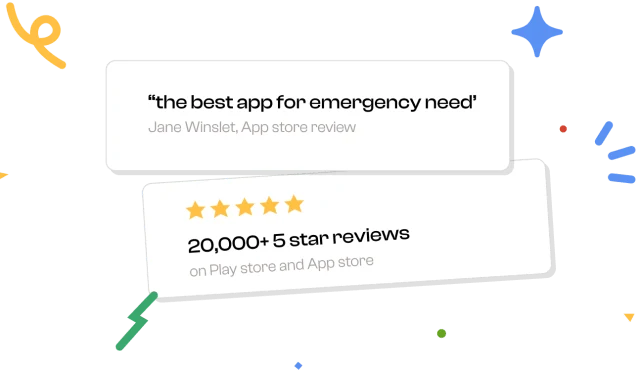The majority of auto accident lawsuits and related insurance claims involve proving the guilt of one or more drivers. Insurance companies may vigorously dispute these claims, delaying the victim’s entitlement to necessary compensation. No-fault auto insurance regulations are in place in several states to expedite claims. No-fault insurance helps in covering medical expenses and/or loss of income when the driver is involved in a car accident, regardless of who was at fault. Here’s everything you need to know about no-fault car insurance and how to find the best quotes to protect your car.
What is No-Fault Car Insurance?
No-fault insurance, also known as personal injury protection insurance (PIP), can pay for the medical costs and lost wages of you and your passengers in the event of a covered accident. The final clause is crucial because it distinguishes no-fault insurance from other forms of auto insurance, such as liability, comprehensive, and collision, which pay damages based on who’s “at fault” in the crash.
Understanding No-Fault Car Insurance
When a car crash happens, the drivers’ insurance companies usually try to figure out who caused it. If the other motorist is found to be at fault for your collision, you may be able to claim any losses or injuries you suffered from their insurance.
No-fault insurance doesn’t consider who caused the collision when settling medical claims. You would claim with your insurer rather than the other driver’s insurance provider. After assessing your claim, it will determine how much you have lost financially and award you damages.
How No-Fault Insurance Works and What It Covers
A no-fault auto insurance policy typically covers medical costs, lost income in the event that an injury keeps you or your passengers from working, essential services like child care, and burial costs. If you are judged to be at fault for an accident and cause harm to another person, bodily injury liability coverage will cover your medical bills and other associated charges.
In the event of an accident, neither of those coverages will cover your medical costs or the costs of your passengers. This is where a no-fault policy’s personal injury protection feature kicks in. Irrespective of who was at blame, you can make a claim for medical bills or other costs arising from a car accident with personal injury protection insurance. Depending on your insurance, PIP coverage may also cover lost income or compensate you for hiring someone to help you with home duties while healing from an accident.
Pros and Cons of No-Fault Car Insurance
Pros of No-fault Car Insurance
A primary advantage of no-fault insurance is prompt payouts. Since there is no question of fault, these claims are usually processed faster. Additional benefits include:
- Short wait times for claims about medical coverage
- may pay for additional crash-related costs (childcare, domestic services, etc.).
- Possibly a great deal less trouble and tension for the injured
Cons of No-fault Car Insurance
The main drawback is that it prevents you from bringing a case unless the accident results in permanent harm. Another drawback of no-fault insurance is that your premiums will be higher. Moreover, drivers in states that aren’t at fault usually pay lower insurance fines for causing accidents. Should you be worried about penalizing an irresponsible motorist, the no-fault system can let you down.
No-Fault vs. At-Fault Insurance Systems: Key Differences
Here is a table of key differences between no-fault and at-fault insurance systems:
| Aspect | No-Fault Insurance System | At-Fault Insurance System |
| Fault Determination | Fault isn’t considered in most cases. | Fault is determined to allocate blame. |
| Claims Process | Each party’s insurance covers their own damages, regardless of fault. | The at-fault party’s insurance covers damages for the other party. |
| Lawsuits | Limited ability to sue for damages beyond a certain threshold. | Lawsuits are common to recover damages from the at-fault party. |
| Premiums | May be lower because there are fewer lawsuits. | May be higher due to the potential for costly lawsuits. |
| Coverage | Typically includes Personal Injury Protection (PIP) to cover medical expenses and lost wages. | Coverage may vary but often includes liability coverage for bodily injury and property damage. |
States with No-Fault Insurance Laws: An Overview
Washington, D.C. and 17 other states provide no-fault insurance. Of those jurisdictions, New York, Florida, Utah, Minnesota, Pennsylvania, New Jersey, Kentucky, Hawaii, Kanas, Massachusetts, North Dakota, and Michigan are known as “no-fault states” because they mandate that drivers maintain a certain level of no-fault insurance. The minimum standards vary throughout the states that mandate no-fault insurance.
Filing a Claim Under No-Fault Insurance: Step-by-Step Guide
- You would contact your insurance provider to submit any injury-related claims because this is a no-fault policy.
- In addition to providing proof of your medical costs or lost income, you must also submit information regarding the accident and the severity of your injuries.
- After processing your claim, the insurance provider will reimburse you for your out-of-pocket costs up to the coverage limits specified in your policy.
Impact of No-Fault Insurance on Accident Victims
Without legal recourse, accident victims can face substantial financial hardship. If an individual’s medical bills exceed the coverage offered by their insurance, they will be accountable for covering the remaining balance out of pocket. A no-fault system divides the financial burden equally between the two parties involved in the accident when only one party bears the majority of the blame. This distribution may result in unfair consequences.
How No-Fault Insurance Affects Legal Rights and Litigation
Giving up your legal ability to prosecute might lead to biased verdicts and improper rewards. When one party bears the majority of the guilt, a no-fault system splits the financial cost equally between the two parties. Injustices may result from this allocation, leaving the innocent party to pay for the carelessness or recklessness of the other party. The chance for accident victims to secure a just settlement is eliminated when they cannot pursue legal action.
No-Fault vs. Traditional Car Insurance
Generally, injuries and medical costs are covered by no-fault insurance. The at-fault driver’s liability insurance may cover this portion of the losses if the collision caused damage to your car. When you purchase insurance in some at-fault states, you can use the at-fault or no-fault insurance system.
You can get PIP insurance in states where you are considered at-fault. Then, even when the other motorist is at fault for the collision, you can make a claim with your PIP insurance. In addition to the possibility of receiving compensation faster, you could find it more convenient to deal with your insurance provider rather than an opponent’s insurance provider.
Read Related Blog: Why Do You Need Car Insurance ? – Know the Reasons
Conclusion
Twelve states mandate no-fault auto insurance, but you can opt for it as an extra in a few others. It may be completely optional in some states where no-fault insurance is mandated. Although most types of auto insurance cover property damage and bodily harm, no-fault insurance is beneficial when the other driver in the collision caused it and doesn’t have insurance to cover your medical fees. Also, check out Beem for personalized auto insurance quotes from leading providers and get up to 40% off on your preferred coverage.




























